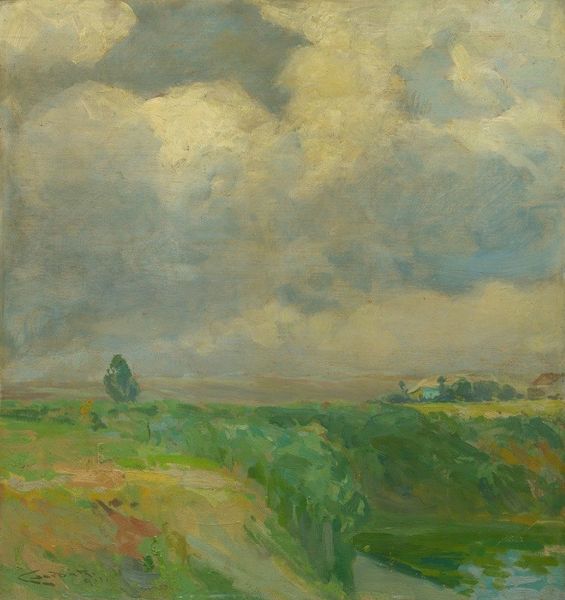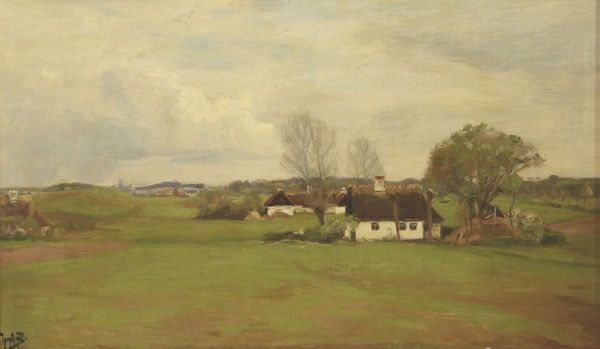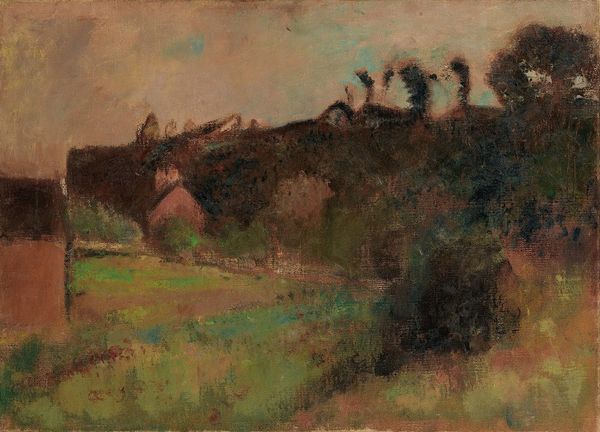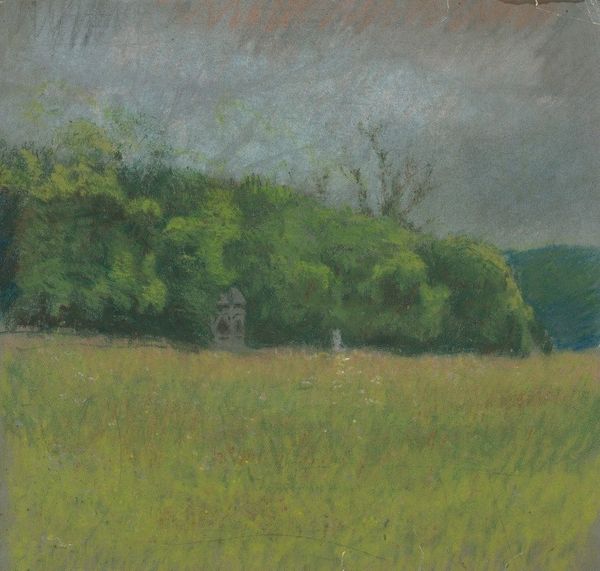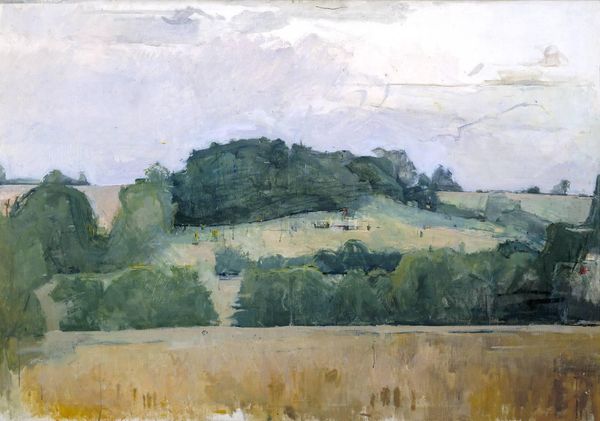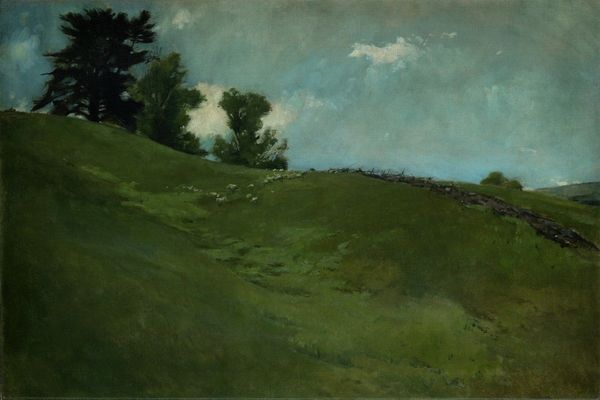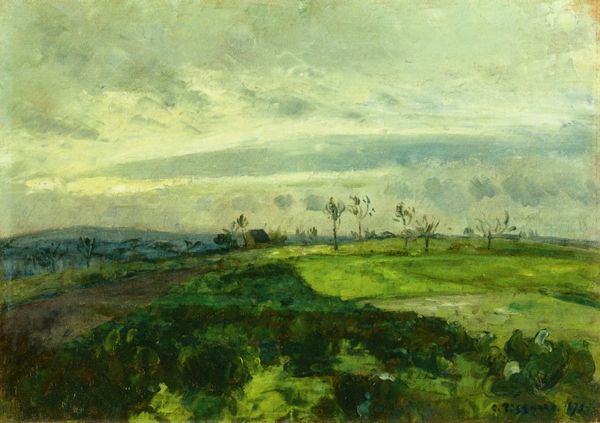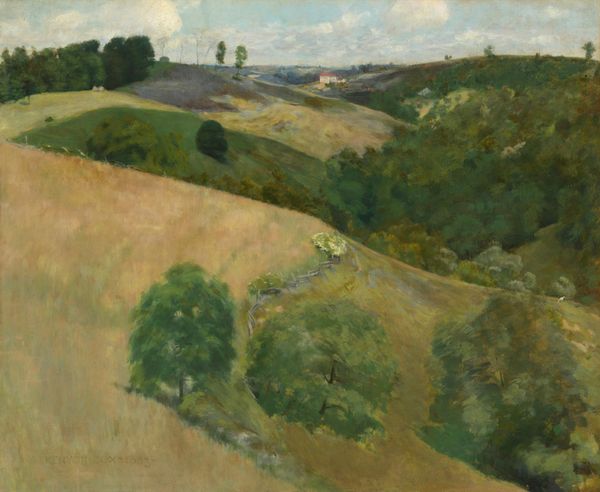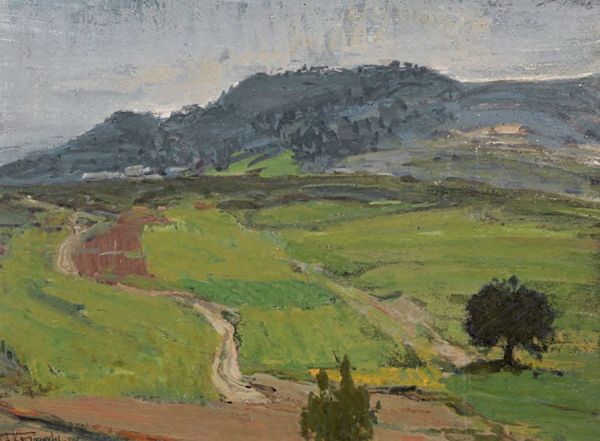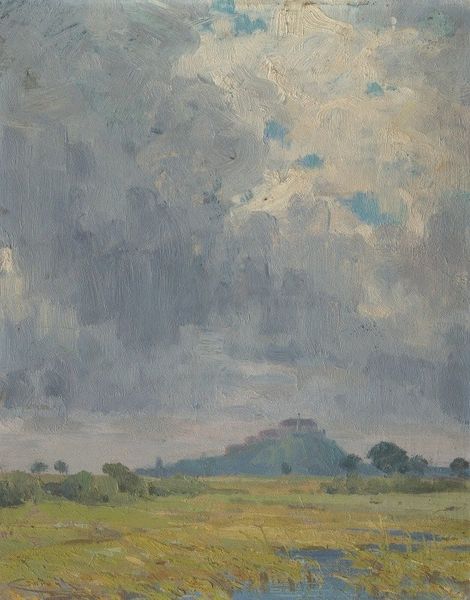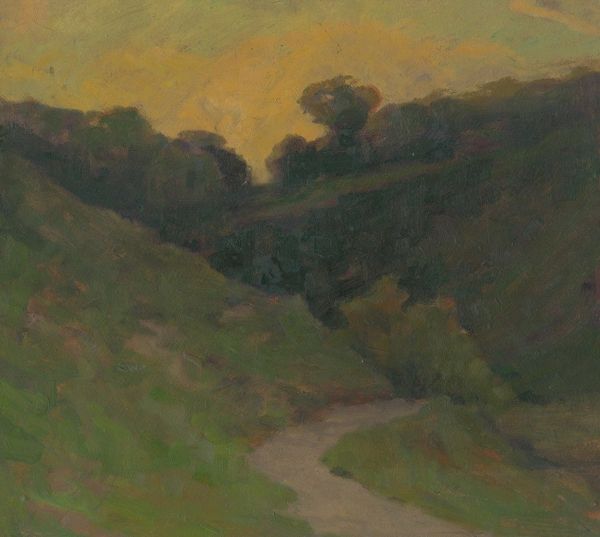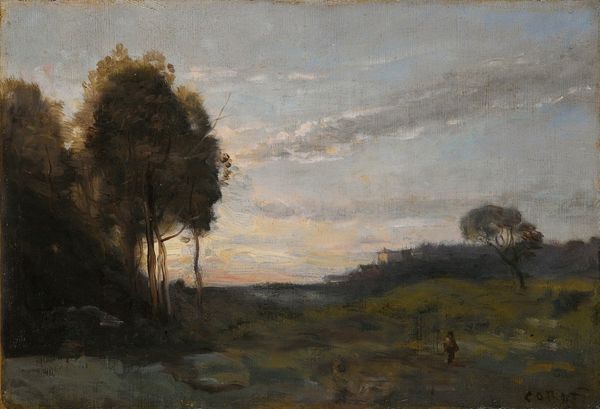
Copyright: Public Domain: Artvee
Curator: The painting before us, "Hradište vo Vaľkovciach," was created in 1923 by Ľudovít Čordák. Painted with oils, it offers us a glimpse into the Slovakian landscape through the eyes of an early 20th-century artist. Editor: My first thought is a powerful sense of place; the sweep of that hillside is immediately grounding. There's a feeling of quiet rural life. Curator: Čordák painted extensively en plein air. It’s vital to understand this work against the backdrop of the burgeoning Slovak national identity. His romantic realism served to capture the beauty and significance of Slovak land and peasantry at a critical time of change and self-definition. The simplicity portrayed reflects a collective ideal. Editor: The visual weight of the hill feels significant. It acts as an ancient symbol. I see in the white cottage, almost nestled in the lee of the hill, a visual echo of ancient protective symbols and earth mother figures. The color story also contributes: notice how that muted blue, above the cottage, reads like a spiritual promise. Curator: Your point regarding protection reminds me of the sociopolitical struggles occurring at the time. There was intense pressure to unify disparate cultural entities, but not always equitably. These quiet depictions are more than aesthetic. Čordák’s vision implicitly asks questions about the power structures. Editor: It makes one wonder, too, about the role that landscape paintings served culturally and politically. Was it propaganda? A reflection of cultural pride? Or was the artist simply observing the beauty he found and representing it? It is very difficult to assess his intentions after all these years. Curator: These questions are central. As we've observed, artwork is never isolated from socio-political currents, even when appearing innocuous. The artistic choice to valorize the countryside reflects on then current discourse concerning industrialization, agrarian labor, nationalism, class struggles, and what constituted ‘authentic’ Slovak identity. Editor: Looking at it now through that lens, I appreciate the ways Čordák seems to have captured the lasting strength residing in symbols of earth, land, and heritage. Curator: Indeed, it encourages us to think about not just the landscape presented to us but the land that carries both burden and bounty, memory and resistance.
Comments
No comments
Be the first to comment and join the conversation on the ultimate creative platform.
